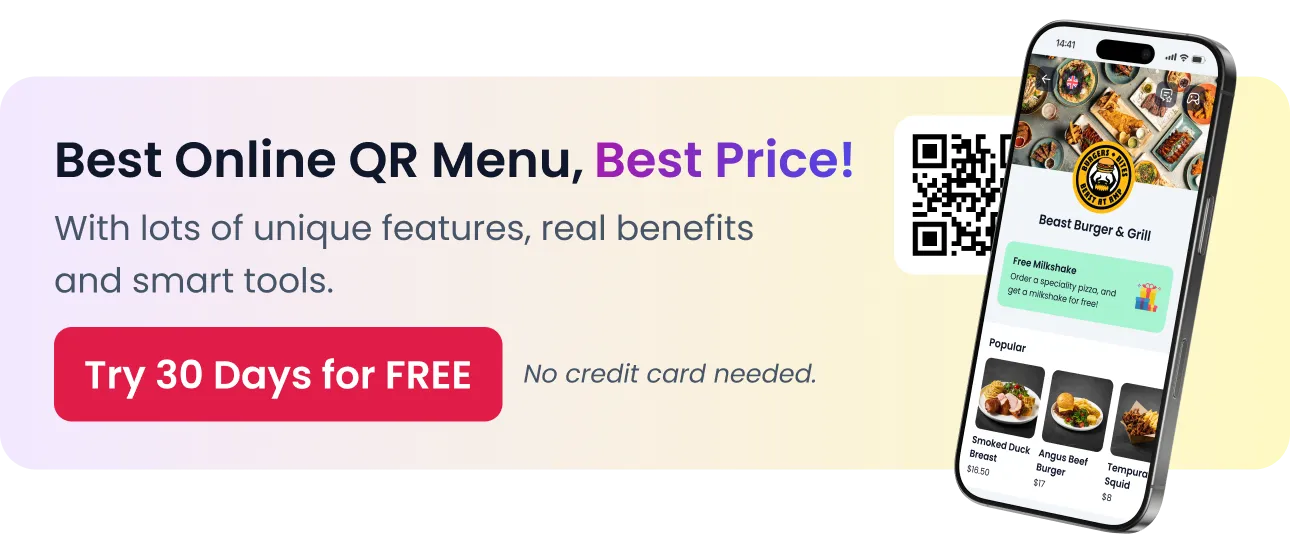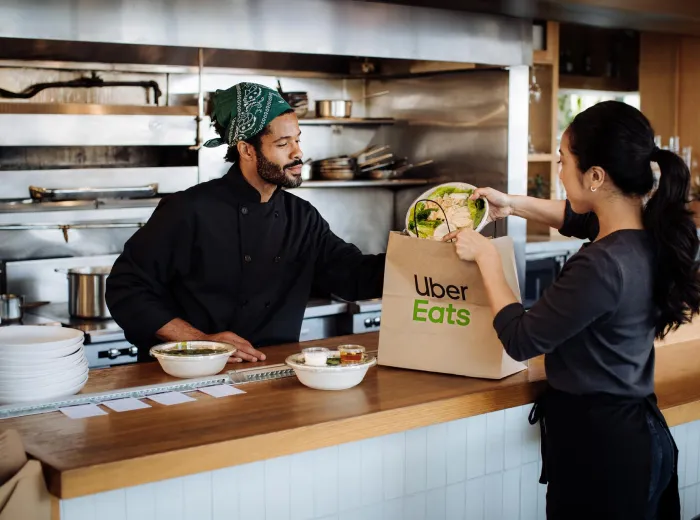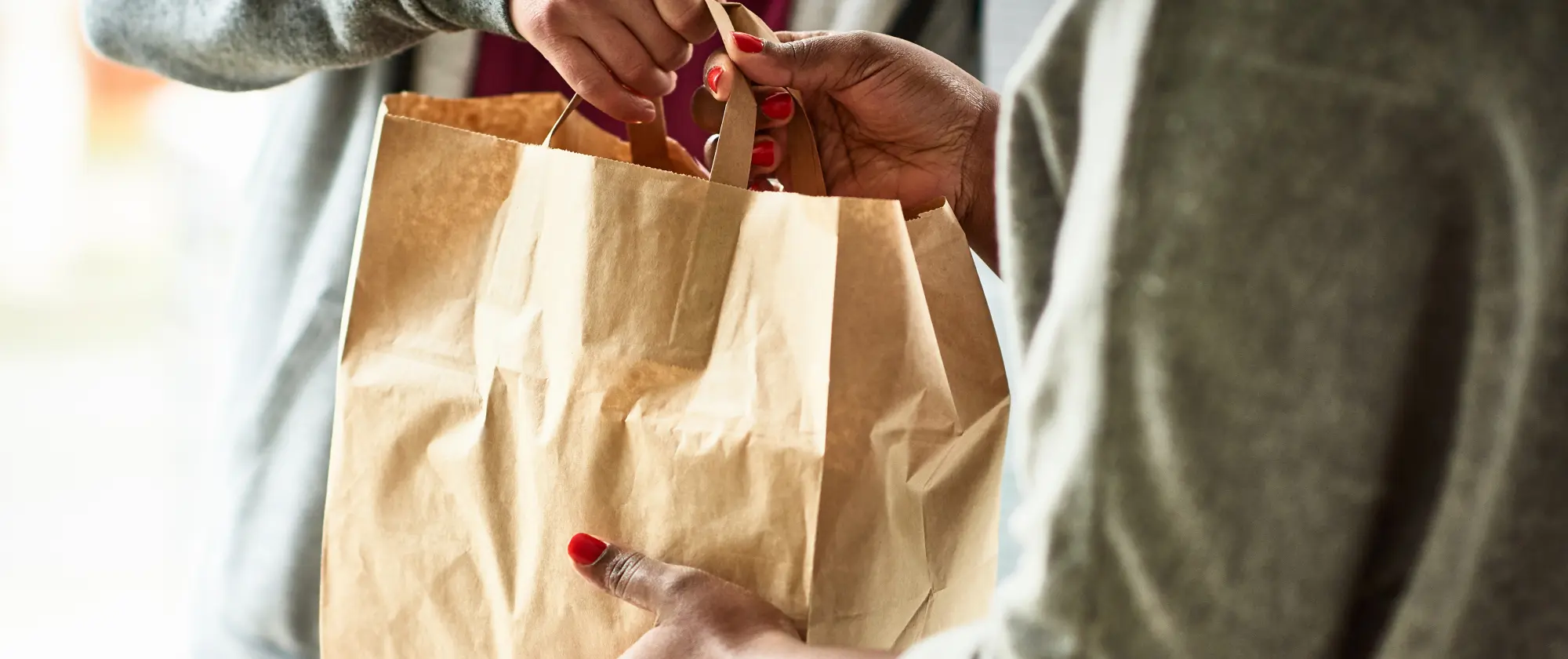
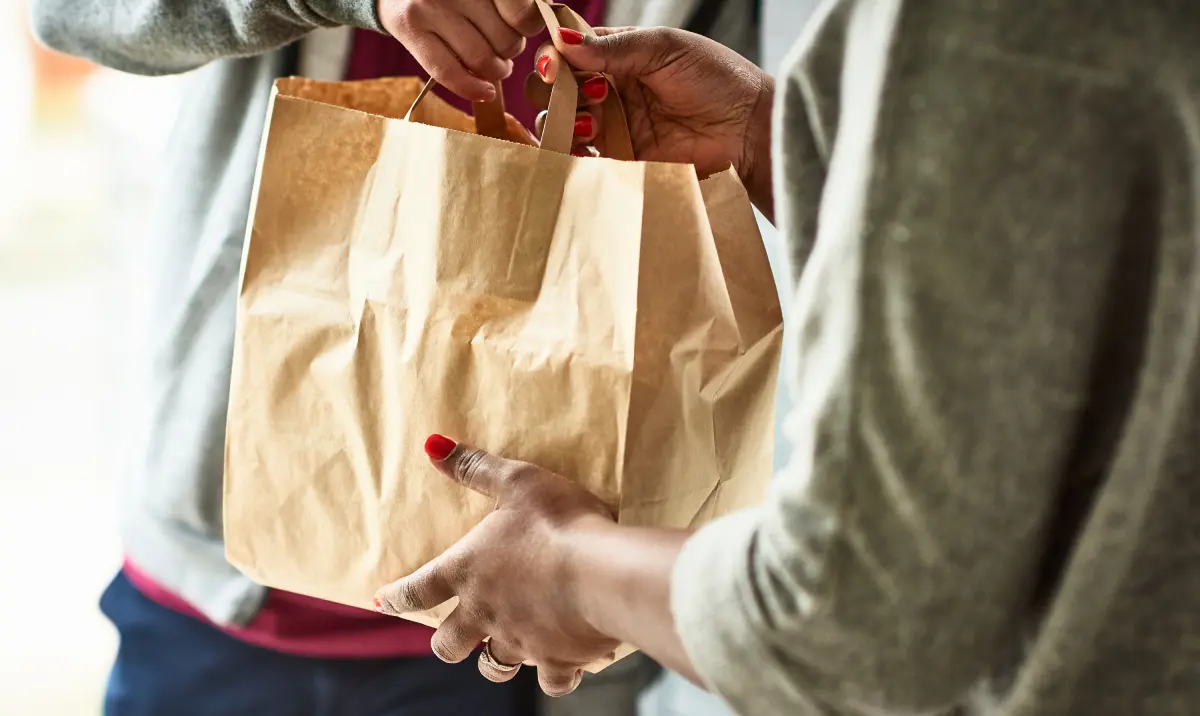
The Most Popular Food Delivery Apps in Egypt | Updated 2025 List
Egypt’s food delivery market has undergone a remarkable transformation, fueled by technological advancements, shifting consumer preferences, and an expanding urban population. As a result, food delivery apps have become indispensable for both consumers and restaurant owners, offering convenience and increased reach in an increasingly competitive industry.
For consumers, these apps provide easy access to a wide variety of cuisines, customizable options, and cashless payment methods. For restaurant owners, partnering with food delivery platforms opens the door to new revenue streams, customer insights, and marketing tools that can help grow their businesses.
In this article, we’ll explore the most popular food delivery apps in Egypt in 2025, providing a detailed look at their features, benefits, and how they contribute to the vibrant food delivery ecosystem in the country. Whether you’re a restaurant owner looking to expand your digital footprint or a foodie searching for the best delivery experience, this guide is your ultimate resource.
Overview of Food Delivery Trends in Egypt 2025
The food delivery market in Egypt has evolved significantly in recent years, driven by technology, urbanization, and changing lifestyles. In 2025, these trends are shaping consumer behavior and creating new opportunities for restaurants to thrive in a competitive digital landscape.
Growth of the Online Food Delivery Market
- The Egyptian food delivery market has experienced exponential growth:
- Urbanization has expanded the reach of food delivery services.
- Rising smartphone penetration makes apps accessible to a larger audience.
- Increased internet connectivity in rural and urban areas.
- Key statistics:
- The market is expected to grow by 15% annually through 2025.
- More than 60% of urban households regularly use food delivery apps.
Takeaway: With growing demand, restaurants need to adopt delivery-friendly strategies to capture a share of this expanding market.
Changing Consumer Preferences Post-Pandemic
- The COVID-19 pandemic permanently changed how consumers interact with restaurants:
- Preference for contactless delivery options.
- Higher demand for healthier and customizable meals.
- Increased reliance on digital platforms for ordering food.
- Trends shaping consumer choices:
- Fast delivery times are a top priority.
- Loyalty programs and discounts play a crucial role in retention.
Takeaway: Restaurants that adapt to these preferences can build lasting relationships with their customers.
Role of Technology in Shaping Food Delivery Services
- Technology has revolutionized the food delivery ecosystem:
- AI-driven algorithms for personalized recommendations.
- Advanced tracking systems for real-time delivery updates.
- Integration of digital wallets and seamless payment options.
- Emerging innovations:
- Voice-enabled ordering through smart devices.
- Use of data analytics to predict customer needs.
Takeaway: Leveraging technology allows food delivery platforms and restaurants to improve efficiency, enhance customer satisfaction, and gain a competitive edge.
These trends underscore the dynamic nature of Egypt’s food delivery industry, making it an essential component of the country’s broader hospitality sector. Restaurants that align with these trends can position themselves for sustained growth and success in 2025 and beyond.
Top Food Delivery Apps in Egypt
Food delivery apps have become a staple for Egyptian consumers, offering convenience and variety at their fingertips. Each app brings unique features, competitive advantages, and opportunities for both users and restaurant owners. Here’s a closer look at the top contenders in Egypt’s food delivery market for 2025.
Talabat: A Leading Choice
- Key Features:
- Extensive restaurant partnerships, from local eateries to international chains.
- User-friendly interface with seamless navigation.
- Multiple payment options, including cash-on-delivery and digital wallets.
- Advantages for Restaurants:
- Robust marketing tools, including promotions and discounts.
- Access to detailed customer insights for better decision-making.
- Reliable delivery network ensures fast service and positive customer experiences.
Takeaway: Talabat remains a top choice for its wide range of offerings and exceptional user experience.
Elmenus: Egypt’s Homegrown Favorite
- Unique Features:
- Focus on local restaurants and authentic Egyptian cuisine.
- Customizable menu options for users.
- Strong emphasis on visual menus for better decision-making.
- Advantages for Restaurants:
- Affordable commission rates compared to international players.
- Targeted marketing opportunities through in-app campaigns.
- Active engagement with foodies via reviews and social features.
Takeaway: Elmenus stands out for its localized approach and strong connection with Egyptian food culture.
Uber Eats: International Player with Local Impact
- Key Features:
- Global expertise tailored to the Egyptian market.
- Streamlined app interface with AI-driven recommendations.
- Exclusive deals with well-known restaurant brands.
- Advantages for Restaurants:
- Broad international customer base for upscale offerings.
- Advanced delivery logistics ensure reliable service.
- Opportunities to participate in Uber’s global promotions.
Takeaway: Uber Eats blends global reliability with localized strategies, making it a favorite among urban users.
Otlob: Pioneering Food Delivery in Egypt
- Unique Features:
- One of Egypt’s first food delivery platforms with a strong legacy.
- Extensive network covering both urban and suburban areas.
- Regular updates and improvements to its app functionality.
- Advantages for Restaurants:
- Established brand recognition among Egyptian consumers.
- Diverse customer base, ranging from budget-conscious users to premium diners.
- Reliable customer service for both restaurants and users.
Takeaway: Otlob’s long-standing presence in the market makes it a trusted and familiar option.
HungerStation: The Saudi Influence in Egypt
- Key Features:
- Fast-growing presence in Egypt with a focus on convenience.
- Integration of grocery and food delivery on one platform.
- Regular promotions and discounts for new and returning users.
- Advantages for Restaurants:
- Expanding reach into new markets, including underserved regions.
- Support for large-scale campaigns to attract more customers.
- Competitive commission structures.
Takeaway: HungerStation leverages its regional expertise to carve out a niche in Egypt’s food delivery landscape.
Each of these apps has carved a unique space in Egypt’s food delivery market. By understanding their features and benefits, restaurant owners can make informed decisions about which platforms to partner with to maximize reach and profitability.
How These Apps Benefit Restaurant Owners
Food delivery apps are more than just a convenience for consumers—they are powerful tools that help restaurant owners expand their reach, increase sales, and streamline operations. Here’s how these platforms provide significant value to restaurant businesses in Egypt.
Increased Visibility and Customer Reach
- Partnering with food delivery apps connects restaurants to a broader audience:
- Access to thousands of potential customers browsing the app daily.
- Opportunity to showcase your menu to users outside your local neighborhood.
- Visibility through in-app promotions and featured restaurant listings.
- Restaurants can leverage these platforms to attract new customers, even those who prefer to dine at home.
Takeaway: Delivery apps serve as a digital storefront, allowing restaurants to compete in a larger marketplace.
Access to Data and Consumer Insights
- Food delivery apps provide restaurants with valuable data:
- Customer preferences and order trends.
- Peak ordering times and popular menu items.
- Insights into average spending habits.
- Restaurants can use these insights to:
- Optimize their menus and pricing strategies.
- Develop targeted marketing campaigns.
- Identify opportunities for operational improvements.
Takeaway: Data-driven decision-making helps restaurants adapt to market demands and boost profitability.
Streamlined Delivery Logistics
- Managing delivery in-house can be costly and complex. Apps simplify this by:
- Offering professional delivery services with trained drivers.
- Providing real-time order tracking to ensure customer satisfaction.
- Reducing the need for restaurants to invest in their own fleet or delivery staff.
- Many apps also handle customer service issues related to delivery, freeing up restaurant owners to focus on their core business.
Takeaway: By outsourcing logistics to delivery platforms, restaurants can focus on providing high-quality food and service.
Enhanced Marketing and Brand Exposure
- Food delivery apps come with built-in marketing tools:
- Seasonal promotions and discounts to attract customers.
- Loyalty programs and cashback offers to retain users.
- Options to feature your restaurant in premium app placements for extra visibility.
- Social proof through customer reviews and ratings further enhances your brand’s reputation.
Takeaway: Delivery platforms not only drive sales but also contribute to long-term brand building.
These benefits make food delivery apps indispensable partners for restaurant owners in Egypt. Whether you’re a small eatery or an established chain, leveraging these platforms can lead to increased revenue, operational efficiency, and stronger customer relationships.
Comparing Food Delivery Apps in Egypt
Choosing the right food delivery app is a critical decision for restaurant owners. Each platform offers unique features, commission rates, and support systems that cater to different business needs. Here’s a detailed comparison to help you make an informed decision.
Pricing and Commission Structures
- Talabat: Charges a standard commission rate with additional fees for premium features.
- Elmenus: Offers lower commission rates, making it attractive for small and medium-sized restaurants.
- Uber Eats: Known for higher commission rates but justifies them with robust global marketing and logistics support.
- Otlob: Provides flexible pricing tiers depending on restaurant size and location.
- HungerStation: Competitive rates, particularly appealing to restaurants looking for regional growth.
Takeaway: Restaurants must weigh the cost of commissions against the potential revenue generated from each platform.
Ease of Integration with Restaurant Systems
- Talabat: Offers seamless integration with most POS systems and inventory management tools.
- Elmenus: Provides customized solutions for restaurants without advanced tech setups.
- Uber Eats: Supports advanced integrations for automated order processing and tracking.
- Otlob: Straightforward setup process, ideal for restaurants new to delivery apps.
- HungerStation: Focuses on easy onboarding with step-by-step guidance for restaurants.
Takeaway: Look for a platform that aligns with your existing infrastructure to minimize operational disruptions.
Consumer Features: App Usability and Payment Options
- Talabat: Offers a sleek interface with multiple payment methods, including digital wallets and cash-on-delivery.
- Elmenus: Emphasizes user-friendly visuals, like photo-based menus, to enhance decision-making.
- Uber Eats: Features AI-driven personalization, offering tailored recommendations to users.
- Otlob: Maintains a simple and familiar interface, appealing to long-time users.
- HungerStation: Combines food and grocery delivery for added convenience.
Takeaway: A user-friendly app with diverse payment options attracts more customers, which benefits partner restaurants.
Delivery Speed and Service Reliability
- Talabat: Well-established delivery network ensures prompt service in most urban areas.
- Elmenus: Focuses on timely deliveries through a network of reliable couriers.
- Uber Eats: Uses advanced logistics to optimize delivery routes and reduce wait times.
- Otlob: Consistently improves its delivery network to meet customer expectations.
- HungerStation: Excels in regional coverage, reaching areas other apps may overlook.
Takeaway: Fast and reliable delivery builds trust and ensures repeat customers for restaurants.
Support for Restaurants and Users
- Talabat: Offers 24/7 customer support for both restaurants and users.
- Elmenus: Provides personalized assistance to restaurants during onboarding and campaigns.
- Uber Eats: Dedicated account managers for premium restaurant partners.
- Otlob: Accessible customer support with a focus on resolving issues promptly.
- HungerStation: Strong focus on resolving delivery-related issues efficiently.
Takeaway: Effective support systems are crucial for maintaining smooth operations and customer satisfaction.
This comparison highlights the strengths of Egypt’s leading food delivery apps. By aligning their features with your business needs, you can choose the platform that maximizes your restaurant’s growth and success.
Key Features to Look for When Choosing a Delivery App
Selecting the right food delivery app can significantly impact your restaurant’s growth and efficiency. To make an informed decision, it’s essential to evaluate the features that align with your business needs. Here’s what to consider.
Commission Rates and Revenue Sharing
- Importance: The commission rate directly affects your profit margins.
- Key considerations:
- Look for apps with competitive rates that don’t compromise your bottom line.
- Check if the app offers flexible pricing tiers based on order volume or restaurant size.
- Evaluate any hidden fees, such as onboarding costs or promotional charges.
Takeaway: Choose an app that balances affordability with value-added features.
Marketing and Promotional Support
- Why It Matters: Delivery apps with robust marketing tools help attract and retain customers.
- Features to look for:
- In-app promotions like discounts, free delivery, and cashback offers.
- Advertising options to feature your restaurant on the app’s homepage or in search results.
- Data-driven marketing campaigns to target specific customer demographics.
Takeaway: Apps with strong promotional capabilities give your restaurant an edge in a competitive market.
Customer Support for Restaurants and Users
- Significance: Smooth communication ensures operational efficiency and customer satisfaction.
- Key features to prioritize:
- 24/7 support for resolving technical or order-related issues.
- A dedicated account manager for personalized assistance.
- Clear escalation processes for critical issues, such as order disputes or delivery failures.
Takeaway: Reliable customer support minimizes disruptions and builds trust with both restaurant owners and customers.
Customization Options for Menus and Offers
- Why It’s Crucial: Customization allows your restaurant to stand out and cater to unique customer preferences.
- Features to consider:
- Ability to add seasonal or promotional menu items easily.
- Flexible pricing and discount options to adapt to market trends.
- Integration of dietary and allergen labels for enhanced customer transparency.
Takeaway: A customizable platform empowers you to adapt and innovate in a dynamic market.
Integration with Technology and Operations
- The Need: Seamless integration with your existing systems saves time and resources.
- Features to prioritize:
- POS compatibility for automated order management.
- Real-time inventory updates to avoid stock issues.
- Advanced analytics dashboards to monitor sales performance and customer behavior.
Takeaway: An app that works in harmony with your operations enhances efficiency and profitability.
By focusing on these key features, restaurant owners can select a delivery app that aligns with their goals and supports long-term success. The right platform should not only streamline operations but also contribute to customer satisfaction and business growth.
Tips for Maximizing Success on Food Delivery Apps
Using food delivery apps effectively can help your restaurant reach new customers, improve brand loyalty, and boost revenue. To make the most of these platforms, you need strategic planning and execution. Here are actionable tips to maximize your success.
Crafting the Perfect Online Menu
- Why It Matters: Your menu is the first impression customers get of your restaurant.
- Tips for an effective online menu:
- Use high-quality images for each menu item to grab attention.
- Write clear, appetizing descriptions highlighting ingredients and flavors.
- Feature top-selling and high-margin items prominently.
- Include dietary and allergen badges to cater to diverse customer needs.
Takeaway: An appealing and informative menu increases order rates and customer satisfaction.
Leveraging Promotions and Discounts
- Importance: Promotions can attract new customers and encourage repeat orders.
- Effective strategies:
- Offer discounts for first-time users to create a positive first impression.
- Implement loyalty programs to reward frequent customers.
- Run time-limited offers, such as lunchtime discounts or weekend specials.
- Collaborate with the app for joint promotional campaigns, like free delivery deals.
Takeaway: Well-planned promotions drive traffic and build customer loyalty.
Managing Customer Reviews and Feedback
- Why It’s Crucial: Reviews and ratings heavily influence consumer decisions.
- Tips for effective review management:
- Respond to reviews promptly and professionally, whether they’re positive or negative.
- Address complaints with solutions to demonstrate accountability.
- Encourage satisfied customers to leave reviews through follow-up messages or incentives.
- Use feedback to identify areas for improvement in your service or menu.
Takeaway: Engaging with customer reviews enhances your reputation and fosters trust.
Optimizing Packaging for Delivery
- Significance: Proper packaging ensures food quality and creates a positive delivery experience.
- Packaging tips:
- Use sturdy, leak-proof containers to maintain food presentation.
- Opt for eco-friendly materials to appeal to environmentally conscious customers.
- Label packaging clearly with order details and any special instructions.
- Include branding elements, such as logos or thank-you notes, to enhance customer connection.
Takeaway: Quality packaging ensures food arrives in perfect condition and reinforces your brand identity.
Monitoring Performance Metrics
- Why It’s Important: Regular analysis helps you refine your strategies and improve results.
- Metrics to track:
- Order volume and revenue trends.
- Customer acquisition and retention rates.
- Ratings and reviews to gauge satisfaction.
- Performance of promotional campaigns.
Takeaway: Data-driven decisions enable continuous improvement and sustained growth.
By applying these tips, you can make the most of food delivery apps to expand your restaurant’s reach, delight your customers, and achieve long-term success. Consistency, attention to detail, and a customer-first approach are key to standing out in a crowded marketplace.
Challenges Facing Food Delivery Apps in Egypt
While food delivery apps have revolutionized the dining experience in Egypt, they also face several challenges that impact both app operators and restaurant partners. Understanding these challenges can help restaurant owners and delivery platforms find solutions that benefit everyone involved.
Competition Among Delivery Apps
- Overview: Egypt’s food delivery market is becoming increasingly saturated.
- Challenges for apps:
- Competing for market share with aggressive marketing and pricing strategies.
- Attracting and retaining both customers and restaurant partners.
- Implications for restaurants:
- Choosing the right app can be difficult amidst numerous options.
- Partnerships may require exclusive agreements, limiting flexibility.
Takeaway: Fierce competition drives innovation but can also strain relationships between apps and restaurant partners.
Managing Delivery Costs and Fees
- Why It’s a Challenge: Rising costs in logistics and fuel directly impact operations.
- Issues faced by apps:
- Balancing affordability for customers with fair wages for delivery drivers.
- Handling backlash from restaurants regarding high commission rates.
- Implications for restaurants:
- Increased reliance on delivery apps can reduce profit margins.
- Some restaurants may need to raise menu prices to offset fees.
Takeaway: Delivery apps and restaurants must find sustainable ways to manage costs while ensuring quality service.
Maintaining Food Quality During Delivery
- Significance: Ensuring food arrives fresh and intact is critical to customer satisfaction.
- Challenges faced by apps:
- Managing temperature control for hot and cold items during transport.
- Avoiding spills or packaging damage caused by mishandling.
- Implications for restaurants:
- Restaurants may need to invest in specialized packaging, increasing expenses.
- Negative reviews due to delivery issues can harm a restaurant’s reputation.
Takeaway: Collaborating on packaging innovations and driver training can mitigate these challenges.
Addressing Regional Disparities in Service
- Why It’s Important: Coverage outside urban areas remains inconsistent.
- Issues for apps:
- Delivering to rural or underserved regions increases logistical complexity.
- Limited driver availability in certain areas.
- Implications for restaurants:
- Restaurants in non-central locations may struggle to attract delivery customers.
- Reduced order volumes from these areas can limit growth potential.
Takeaway: Expanding service networks and incentivizing drivers can bridge gaps in regional coverage.
Evolving Consumer Expectations
- Overview: Customers demand faster delivery, better deals, and personalized experiences.
- Challenges for apps:
- Keeping up with technological advancements to meet customer needs.
- Offering competitive promotions without eroding profitability.
- Implications for restaurants:
- Restaurants need to adapt menus and service models to align with app trends.
- Increased pressure to maintain high ratings and swift order fulfillment.
Takeaway: Meeting consumer expectations requires constant innovation and collaboration between apps and restaurants.
These challenges highlight the complexities of Egypt’s food delivery ecosystem. By understanding these issues, restaurant owners can better navigate partnerships with delivery apps and develop strategies that foster resilience and growth.
Future of Food Delivery in Egypt
The future of food delivery in Egypt is set to be shaped by rapid technological advancements, evolving consumer expectations, and a growing focus on sustainability. As the industry continues to mature, both restaurants and food delivery apps will need to adapt to these emerging trends.
Emerging Technologies in Delivery Services
- AI and Machine Learning:
- Apps are increasingly using AI to predict customer preferences and improve delivery routes.
- Machine learning helps platforms refine their services through data-driven insights.
- Automation in Logistics:
- Use of automated systems to manage inventory and streamline order processing.
- Advanced dispatch algorithms to ensure faster and more accurate deliveries.
Takeaway: Embracing these technologies can lead to enhanced efficiency and customer satisfaction.
Drone and AI-Driven Deliveries: What’s Next?
- Drone Deliveries:
- Potential for drones to deliver food faster, especially in traffic-congested cities.
- Pilot projects in urban areas could redefine delivery time expectations.
- AI-Driven Autonomous Vehicles:
- Introduction of self-driving vehicles for contactless delivery.
- Cost-efficient and eco-friendly alternatives to traditional delivery methods.
Takeaway: While these innovations are still in development, they have the potential to revolutionize the food delivery landscape in Egypt.
Sustainability Trends: Eco-Friendly Delivery Initiatives
- Eco-Friendly Packaging:
- Increasing demand for biodegradable and reusable packaging.
- Restaurants partnering with apps that prioritize sustainable practices.
- Green Delivery Options:
- Apps incorporating electric scooters or bikes to reduce carbon footprints.
- Partnerships with organizations promoting green initiatives in the food sector.
- Waste Reduction Strategies:
- Incentivizing customers to opt out of unnecessary utensils and packaging.
- Leveraging technology to reduce food waste through better inventory management.
Takeaway: Restaurants and delivery apps that prioritize sustainability will appeal to environmentally conscious consumers and contribute to long-term ecological benefits.
Personalization and Hyperlocal Strategies
- Personalized Experiences:
- Use of AI to tailor menus, promotions, and recommendations to individual user preferences.
- Dynamic pricing models offering deals based on order history or time of day.
- Hyperlocal Deliveries:
- Increased focus on delivering from nearby restaurants for faster service.
- Enhanced support for local businesses through targeted partnerships.
Takeaway: Personalized and localized strategies will strengthen customer loyalty and foster community connections.
Expansion to Underserved Areas
- Reaching Rural Markets:
- Delivery apps focusing on infrastructure development to cater to non-urban regions.
- Incentives for drivers and restaurants in less saturated markets.
- Collaborations for Wider Reach:
- Partnering with logistics companies to expand service areas.
- Leveraging technology to optimize delivery routes in remote locations.
Takeaway: Expanding into underserved areas represents a significant growth opportunity for the food delivery industry in Egypt.
As Egypt’s food delivery market evolves, the integration of cutting-edge technology, sustainability practices, and customer-focused strategies will define the industry’s trajectory. Restaurants and apps that stay ahead of these trends will thrive in a competitive and dynamic environment.
Key Takeaways
The food delivery industry in Egypt is rapidly evolving, presenting both opportunities and challenges for restaurant owners. By understanding the current landscape and future trends, businesses can make informed decisions to thrive in this competitive market.
- Food Delivery Apps Are Essential for Growth: Platforms like Talabat, Elmenus, and Uber Eats offer restaurants unparalleled access to a broad customer base, increasing visibility and sales.
- Choosing the Right App Matters: Each app has unique features, commission rates, and benefits, so it’s crucial to align with the platform that best suits your business needs.
- Maximizing Success Requires Strategy: Crafting an appealing menu, leveraging promotions, and investing in proper packaging are essential steps to stand out and succeed on these platforms.
- Challenges Require Proactive Solutions: Competition, delivery costs, and maintaining food quality are significant hurdles, but they can be managed through collaboration and innovation.
- Future Trends Offer Exciting Opportunities: Emerging technologies like AI and drones, coupled with sustainability initiatives, will reshape the food delivery landscape, offering growth potential for forward-thinking businesses.
By staying informed and adapting to these dynamics, restaurant owners can position themselves for long-term success in Egypt’s vibrant food delivery ecosystem.
ABOUT THE AUTHOR
Erkin Coban
Your Customers Deserve The Best
And we got Menuviel for them.
The fastest and easy-to-use online QR menu with 12+ unique features. Choose Menuviel and elevate your service quality to the next level.
Use free for the first 30 days.
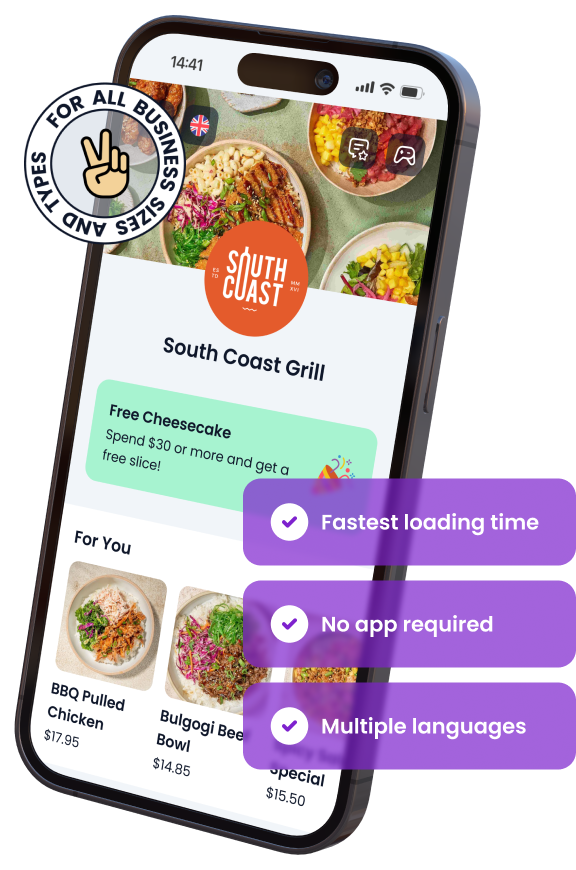
In This Article

Free AI Tools for Restaurants
TRY NOW ➜

Enjoy discounted prices for Egypt
We adjust our subscription price for Egypt, so you enjoy all the same great features at a lower, more affordable rate.


